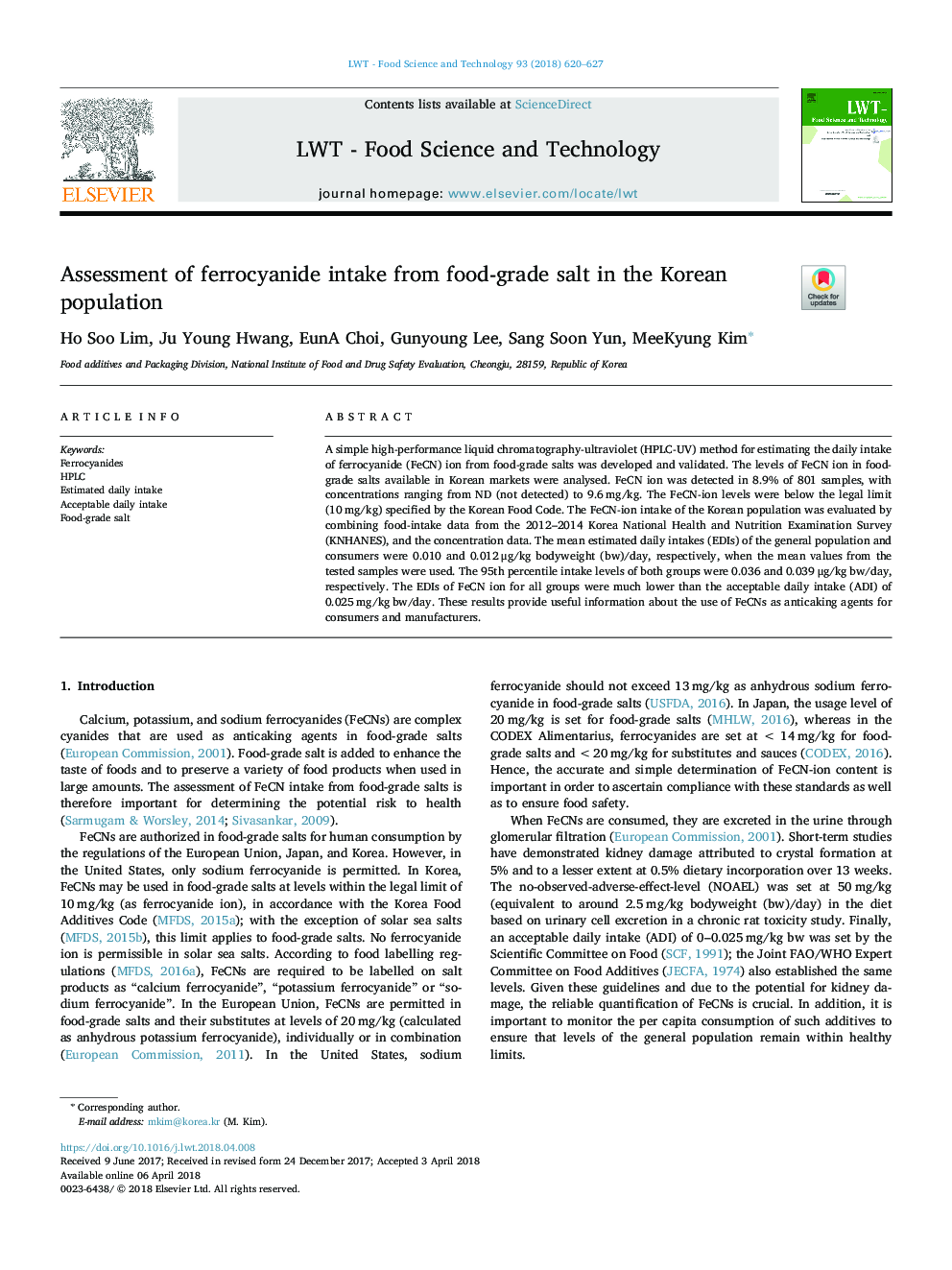| کد مقاله | کد نشریه | سال انتشار | مقاله انگلیسی | نسخه تمام متن |
|---|---|---|---|---|
| 8891111 | 1628506 | 2018 | 8 صفحه PDF | دانلود رایگان |
عنوان انگلیسی مقاله ISI
Assessment of ferrocyanide intake from food-grade salt in the Korean population
ترجمه فارسی عنوان
بررسی میزان مصرف فری سینید از نمک خوراکی در جمعیت کره
دانلود مقاله + سفارش ترجمه
دانلود مقاله ISI انگلیسی
رایگان برای ایرانیان
کلمات کلیدی
موضوعات مرتبط
علوم زیستی و بیوفناوری
علوم کشاورزی و بیولوژیک
دانش تغذیه
چکیده انگلیسی
A simple high-performance liquid chromatography-ultraviolet (HPLC-UV) method for estimating the daily intake of ferrocyanide (FeCN) ion from food-grade salts was developed and validated. The levels of FeCN ion in food-grade salts available in Korean markets were analysed. FeCN ion was detected in 8.9% of 801 samples, with concentrations ranging from ND (not detected) to 9.6â¯mg/kg. The FeCN-ion levels were below the legal limit (10â¯mg/kg) specified by the Korean Food Code. The FeCN-ion intake of the Korean population was evaluated by combining food-intake data from the 2012-2014 Korea National Health and Nutrition Examination Survey (KNHANES), and the concentration data. The mean estimated daily intakes (EDIs) of the general population and consumers were 0.010 and 0.012â¯Î¼g/kg bodyweight (bw)/day, respectively, when the mean values from the tested samples were used. The 95th percentile intake levels of both groups were 0.036 and 0.039â¯Î¼g/kgâ¯bw/day, respectively. The EDIs of FeCN ion for all groups were much lower than the acceptable daily intake (ADI) of 0.025â¯mg/kgâ¯bw/day. These results provide useful information about the use of FeCNs as anticaking agents for consumers and manufacturers.
ناشر
Database: Elsevier - ScienceDirect (ساینس دایرکت)
Journal: LWT - Volume 93, July 2018, Pages 620-627
Journal: LWT - Volume 93, July 2018, Pages 620-627
نویسندگان
Ho Soo Lim, Ju Young Hwang, EunA Choi, Gunyoung Lee, Sang Soon Yun, MeeKyung Kim,
